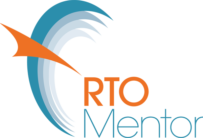Continuous improvement is fundamental in your RTO operations; it should be done all the time.
When visiting RTOs I have found that it actually is happening all the time; it just might not be recorded.
Updates are made when feedback is received, changes to strategies to meet client requirements and to create efficiencies are made, training programs are reviewed before delivery and there are continual learnings. RTOs are continually improving; but can you put your hand on your heart and say that you document everything that has been done, and the actions that took place?
It is found, by auditors current and past that we struggle not so much with ‘doing’ but with the documenting of the activity, in a way that the auditor can see results.
There are continuous improvement aspects to all of the Standards and the auditor will be looking for evidence of your analysis and understanding what are the lessons learnt; if they worked – why and how can it be improved?
So many RTOs consider the “happy sheets” at the end of the training sessions to be the only thing they record. The problem with this is they are only a minor part of the RTO and they don’t always tell a story or provide enough information for the RTO to show how they analysed the feedback and what action had then taken place. It isn’t just about them, it is about recording everything that takes place, and being able to show you have learned a lesson.
In the past I have been talking about the Continuous Improvement register – a valuable tool for recording such activities. The auditor will be focusing on the activities, analysis and subsequent action.
Compliance means making sure your RTO has continuous improvement activities such as the below are taking place regularly:
- inclusion of contract trainers in validation activities, feedback of material and from clients ;
- regular checking a staff Professional Development, industry involvement, vocational competencies;
- regular checking of equipment and other resources used in the training and assessment;
- regular validation activities, ensuring meeting the Training Package and industry requirements and Learning;
- validating what has been developed in the training and assessment strategies, the resources and what is being implemented in the training and assessment arena;
- regular review of training and assessment materials, incorporating feedback from all parties
The key is regularity – constant minor activities, making sure that issues are identified and addressed; and having everything recorded carefully.
So two points in summary:
- Maintain a register of activities, including lessons learned, and actions taken
- Maintain the documents behind the activities so you can demonstrate to the auditor what happened
The auditor will want to see evidence that the results of any review have initiated actions, if needed, and then an actions list results, with timelines and changes made. The list could be simple dot points, it doesn’t need to be detailed. It just needs to show clearly what was identified and the new result. A file with the hand written notes are sufficient to show what you have identified.
In this way the RTO eliminates the possibility of an Auditor stating that there was good intent however no action (non compliance).
